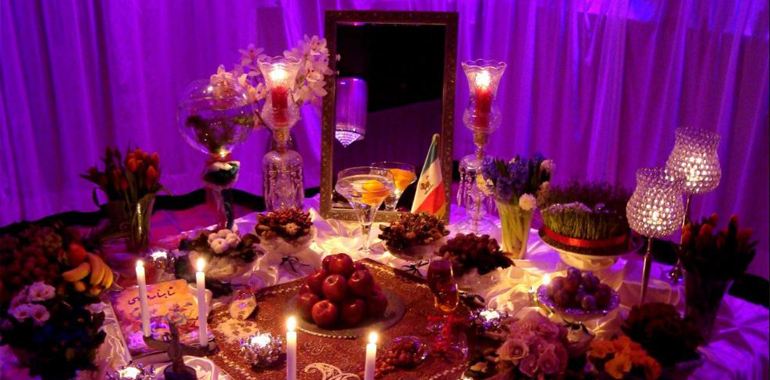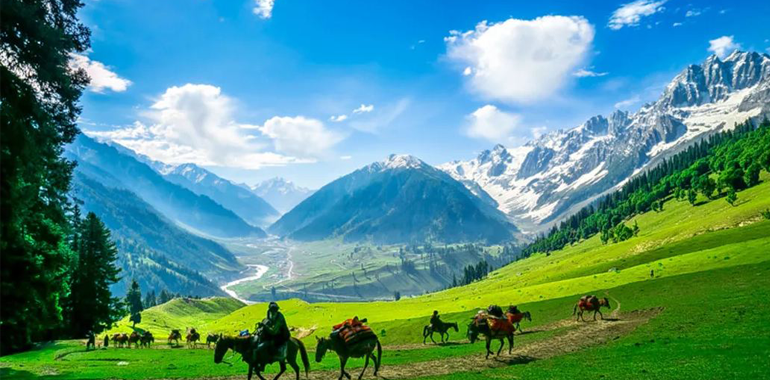These words resonate euphonic as you stroll around the valley of Kashmir, and it is the apt, most precise description of Kashmir in fewer possible words:
Agar Firdaus Bar Roo-e Zameen Ast,
Hameen Ast-O Hameen Ast-O Hameen Ast
If there is a paradise on earth,
It is this; it is this; it is this
Travelers have been visiting Kashmir in large numbers, but their visit remains mostly confined to the tourist destinations in Kashmir. About the rest of my life there, they don't know. However, for any traveler, knowing Kashmir, its culture, people, life, nature, and society from close is as essential as visiting Kashmir. It is of utmost importance to the traveler to know about a place, the people, and the kind of life they live.
Taking inspiration from that, I plan to take you through Kashmir, touching upon its various aspects, viewing it from multiple angles and colors as comprehensively as my astuteness would allow. Let us make the present blog a great intellectual discourse, finding flow from a traveler's perceiving mind to the reader's receiving mind. The motive is to help you change your perception of Kashmir. The aim is when you visit Kashmir next time, you will see it through another lens, which is colorful and very delightful, indeed.
Spring in Kashmir
The Valley of Kashmir - many are struck by its mesmerizing beauty, called a Paradise on Earth. Its lofty snow-capped mountains, fresh springs emanating from glaciers, and lush green landscapes remind the beholder of heaven's beauties. If there is one thing setting apart Kashmir's graceful beauty from other beautiful destinations in the world, it is its evergreen natural splendor. Irrespective of the season – spring, summer, autumn, or winter – its beauty only increases and never diminishes. As spring arrives in Kashmir, with its arrival becomes visible, the first signs of life. It is as if some mysterious force infuses a new life into the dead earth after winter's long deadly slumber. It is like a divine hand touching the grass remnants gently beneath the world, commanding it to sprout profusely, and saying, the earth with new life awaits your arrival.
With spring's arrival in Kashmir, the tender buds of plants blossom. The springs and rivers welcome a generous water flow from melting glaciers and snowy mountains. The smell of the soil as sunrays penetrate its damped surface sprays aroma into the air. Spring season sets in motion festivity, hope returns to the valley, and so does life and its bustling activities. Especially for children, spring means the end of the dreadful confinement of three months of winter break. Every nook and corner of Kashmir transforms into a colorful spectacle as children, dressed colorfully, neatly combed, and bathed with cheerful faces, leave for school. It seems as if millions of butterflies have descended directly from heaven, now hovering over the replicated version of paradise called - Kashmir.
Spring in Kashmir snatches the life out of death, and anything not yet open to welcome the new breath of life brought forth by spring slowly breaks its waterproof enclosures and pokes its tiny head out to embrace the fresh breeze of life. The white snow carpets slowly roll back and pave the way for the soil to inhale the first rays of the spring sun. Spring in Kashmir has a distinct aroma. The fragrance emerging from the buds, blossoming in the moderately warm spring breeze as bees perform pollination, fills the air with a soothing and delightful smell. The festive season of nature has begun. Moreover, to celebrate with heart its delights and cheerfulness, celebrations of Nawroz start in Kashmir.
“Wherever you go becomes a part of you somehow.”
- Anita Desai

Persian Roots of Kashmir's Culture, Cuisine, Poetry, and More
The festival of Nawroz has a long history, dating back to the Persian Empire. The impact and influence of Persian culture, handicrafts, and poetry have been indelible on Kashmir and its culture. Persian customs and traditions found a way to Kashmir, and since times immemorial, it has shaped Kashmir's culture, handicrafts, and cuisine. Had the Persian Empire been a Master, Kashmir undoubtedly would have been an ardent Disciple.
Kashmiri cuisine, for example, called Wazwan, which has a proud collection of thirty-six varieties, finds its origin in Persia or present-day Iran. The great masters of Persian Poetry, the likes of Rumi, Sadi Shirazi, Hafiz, and more, aren't only fervently read but also religiously revered. People in Kashmir, for many decades, have been relishing the Persian language, their taste for it profound. However, it is a reality Persian affair has received a dent as the conflict in Kashmir gained momentum. For the new generation, Persian is an alien language. They can hardly speak or write for the school curriculum, had it shelved since a long time ago. However, admiration for the wisdom in Persian poetry has not died down.
Persian poetry has served as the intellectual bedrock of social, political, and religious discourse in Kashmir. With time, it has become even more relevant to life in Kashmir. That's why the scholar's speech or preacher's sermon isn't complete or considered lively if he doesn't quote verses from Persian poetry. Of Kashmiri peoples` everyday speech, Persian philosophy, as expounded by the masters such as Rumi, Shirazi, and Firdausi, has served as the foundation, a litmus to the Kashmiri sense of morality. Even today, elders speak about Rumi and others with academic airs.
Nawroz Celebrations in Kashmir
The literal meaning of Nawroz is 'new day. It is the first day of the Iranian New Year, celebrated by the people of Iran and throughout Western Asia, Central Asia, the Caucasus, the Black Sea Basin, and the Balkans. The three-thousand-year-old festival of Nawroz finds its loyal celebrants throughout the world. Kashmir, too celebrates Nawroz as fervently as possible. However, it too is dying a silent death like many other traditions in Kashmir, confined nowadays to a public holiday only.
However, people's cold attitude to Nawroz in Kashmir has been the case sometimes. I still have its memories freshly stored in my mind. Not long ago, in Kashmir, we celebrated Nawroz, in simple terms, the Kashmiri way. On the day of Nawroz, grandmothers would make sure every family member, from young to old, children to elders, wakes up early in the morning to pray to God. They were praying, usually aimed to express our gratitude for the countless blessings Allah had and continues to bestow on humanity.
Every member of the family member was expected to be as agile and cheerful as nature is, and my grandmother - I am sure others as well - could stand anything but weeping and moaning on the day of Nawroz. Even if a person is in pain or has some legitimate reason to weep, they could not do it without receiving a severe warning from their grandmothers. The kids, too, couldn't safeguard their freedom to cry for a moment without receiving painful beatings from their grandmothers. In case the parents refuse to buy their children candies, they can't weep. For grandmothers believed if an individual mourns on Nawroz, they will continue to do so throughout the year.
Human emotions such as happiness, sadness, anger, weird, and gloomy demeanor, and whichever emotions define a person's conduct or feeling they don on their face on Nawroz's day, grandmothers believed, would remain so for the rest of the year. Such was the widespread belief amongst old here. The funny part is that visiting a doctor in Nawroz is forbidden as it is considered a bad omen for a person's health. You can't argue with your grandmother, can you? It doesn't matter if she is a Kashmiri grandmother or any other, a grandmother is a grandmother, and they're alike in every corner of the earth! Alas, those grandmothers are no more!
As fine lines of demarcation fade away and disappear. Globalization creeps in to paint the world one uniform color of mass culture of a global following; local traditions disappear quicker. Even though we all know popular culture is superficial, it is a glamorous coating on decayed humanity. Still, its attraction globally has made it impossible for local culture to curtail its influence. It is as accurate of Kashmiri culture as anywhere else. Similarly, Nawroz celebrations have disappeared from everyday life; however, not from my memory of Kashmir.

Tulip Garden in Kashmir: A Perfect Place to Visit in Kashmir in Spring Season
Tulip Garden, officially named Indira Gandhi Memorial Tulip Garden, is the central attraction in Kashmir during spring. Spread over sprawling 30-hectare land, it is a new addition to the tourist destinations in Kashmir. Every year during spring, it opens for tourists to behold the colorful spectacle of a tulip blossom. Tulip Garden in Kashmir is the largest in Asia. It has, in addition to 1.5 million tulips of 46 varieties, a magnificent collection of flowers of other species as well, including daffodils, hyacinths, and ranunculus. People from not only Kashmir but also India and the rest of the world come to the cheerful and fascinating attraction of Tulip Garden, located in Srinagar. You see here the charming spring bloom at its mighty best.
Village Life in Kashmir in Spring Season
People in villages only have little to do. Outdoor activities remain mostly confined to sowing vegetable seeds and caring for cattle and other livestock. In the lush green meadows, you see flocks of sheep wolfing down the first greenery of the year. Not long ago, farmers used to take oxen to plow their agricultural lands for rice cultivation. Women would accompany men with baskets full of walnuts as a customary offering to every passerby to mark the beginning of the new farming season and, of course, as a gratitude to God.
The itinerant laborers, who spend winter outside Kashmir, return home. For laborers, spring is especially a busy season as they return to work after months of the off-season. After chilling winters and snow halt the machinery of life, spring breaks the knot and sets parts in motion again. With spring`s arrival, the clatter, chatter, and patter return to the marketplaces and workplaces. Streets and buses once shorn of school-going children and college students roar again with life as schools and colleges re-open after winter break. Shortest to say, with spring, a new life arrives in Kashmir.



0 Comments